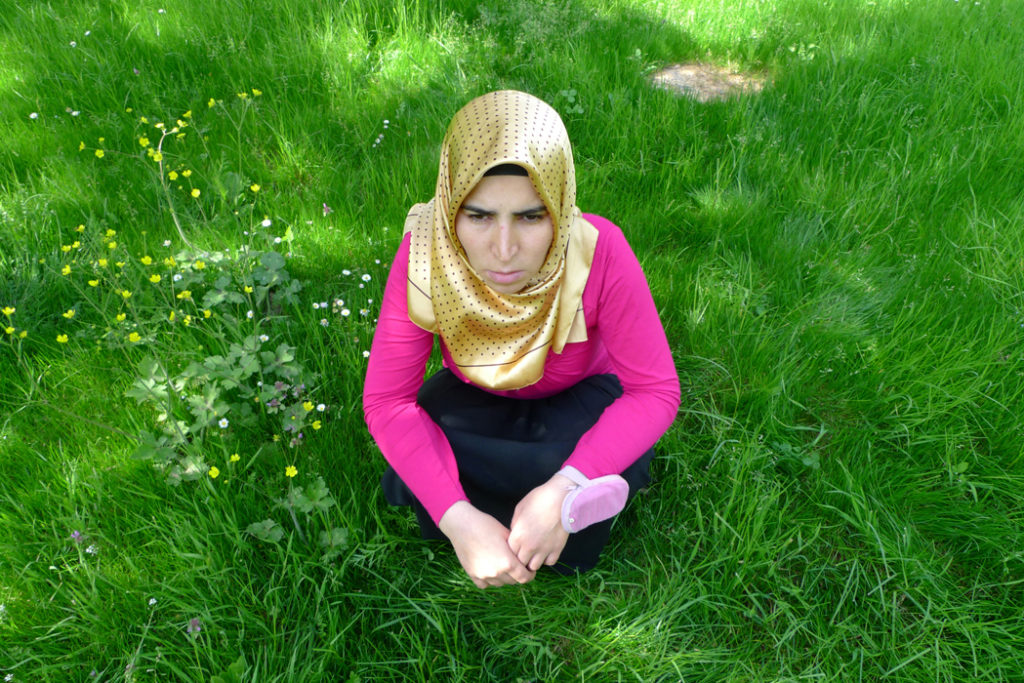Just prior to the opening of Sophie Calle’s current exhibition at the Musée d’art contemporain de Montréal, I had the privilege of attending a private lecture she gave at the gallery. Normally, this kind of rarified encounter is not my cup of tea, but it didn’t take long for Calle to seduce the audience, myself included, with her candor, wit and intelligence, to say nothing of the truly magnificent body of work she has produced since becoming an artist several decades ago.
During her talk, Calle discussed a variety of topics, including her belief that her work is not voyeuristic and her surprising career as a stripper. As I walked through her exhibition for the first time, however, I found myself returning stubbornly to some comments she made about her relationship to politics.
At the beginning of her career, Calle was a militant leftist who dreamt of becoming “une artiste engagée.” Unfortunately, every idea she conceived within this paradigm was, by her own admission, terrible. I am assuming that by “terrible” she meant overly didactic. “For the Last and First Time” is definitely not didactic, but it does contain a political undercurrent that I could not help but connect with her unrealized desire for activism.
Originally presented as part of the 2011 Istanbul Biennial, “For the Last and First Time” consists of two bodies of work essentially dealing with visual regimes. On a conceptual level, both can be related to what French philosopher Jacques Rancière calls “the distribution of the sensible.” This somewhat cheerless jargon basically refers to the way in which forms of social inclusion and exclusion are first configured within the sensible, that is the sensory experiences of life, such as those obtained through vision. In The Last Image (2010), for instance, Calle questions processes of marginalization rooted in the visual by asking blind people living in Istanbul to describe the last thing they saw before losing their sight. Their recollections include a view of the sun rising over the sea, the anatomy of a car accident, children sitting on a divan and the face of a man holding a revolver. The result is a poignant series of photo-portraits accompanied by texts describing each vision, as well as Calle’s attempt to reconstruct this vision photographically. Through this moving juxtaposition of image and text, she deftly explores the opposition between blindness and visual pleasure, while also blurring this distinction in the process.
The Last Image is followed by Voir la mer (2011), an installation of nine videos, all realized with the assistance of French cinematographer, Caroline Champetier. Based, once again, upon a simple premise—meeting people in Istanbul who have never seen the sea and filming their first time seeing it—this work skillfully runs aesthetic discourses of beauty and the sublime up against socioeconomic boundaries related to class. It is difficult to convey in words how affective this installation is; its simplicity and elegance are, in a word, disarming. At the same time, and in keeping with the paradoxical spirit of so much of Calle’s work, it forces a deeply political question upon the viewer: Why have these people, who live in a city surrounded by water, never been to the sea? As someone from Nova Scotia, I am acutely aware of the implications of this question. A few years ago, on one of my ocean-side walks, I came across a sign that said: “If you want the view, you can pay for it.” It is here that the notion of the distribution of the sensible comes into full force.
While it may seem ironic to begin an account of Calle’s inclusive politics with a description of her exclusive lecture, it is important to remember she has never shrunk from such contradictions. Indeed, it is often taken for granted that her work blurs boundaries, particularly those between public and private life. In the end, however, “For the Last and First Time” seems less concerned with this question—and hence notions of voyeurism—and more with the ways in which sense experiences determine our participation in, or exclusion from, communal life.









